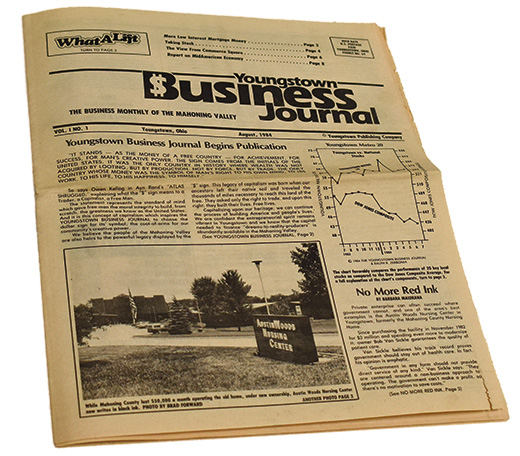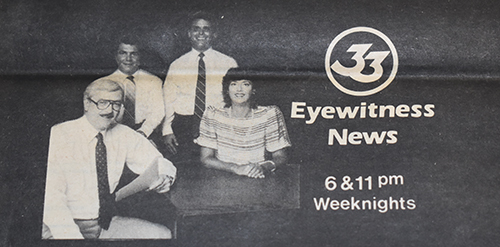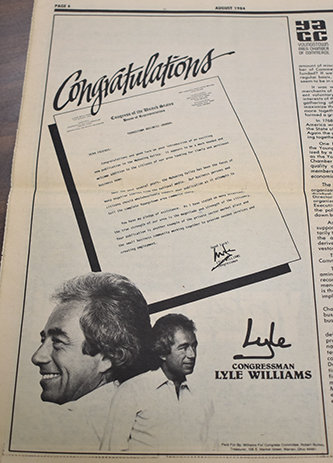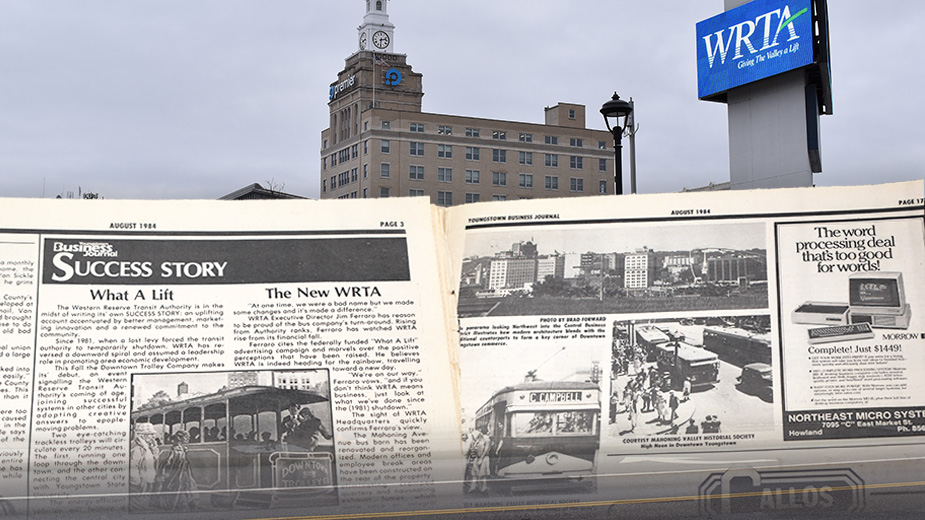YOUNGSTOWN, Ohio – The inaugural edition of the Youngstown Business Journal spotlighted the Western Reserve Transit Authority. It was the first installment of the newspaper’s long-running Success Story series.
Back then as today, the transit system – which was experiencing a boost from its “What A Lift” advertising campaign – was preparing to launch a new downtown service and construct a bus terminal. Its executive director at the time, Jim Ferraro, declared that WRTA was “on [its] way” as the service continued its rebound from a temporary shutdown in 1981.
Dean Harris, WRTA’s current executive director, is similarly optimistic about the future of the transit authority. Ridership over the past 18 months has grown between 20% and 40%, and for the year is up 29%.
“This year [2023] will be the best ridership year since 2013,” Harris says.

Previously known as Youngstown Transit Co. and Youngstown Municipal Railway Co. before that, the bus service became the publicly owned WRTA in 1971.
Today, WRTA gets 80% of its funding from a quarter-percent countywide sales tax. The system covers Youngstown and the surrounding suburbs with fixed-route service.
Its offerings also include countywide service in areas not served by fixed routes that targets patrons who qualify under the Americans with Disabilities Act or those 65 years old or older who are unable to use the fixed-route and nighttime service.
The transit authority, which has not charged fares since the Covid-19 pandemic, provided just over 1.6 million trips last year, according to Harris.
He describes the elimination of passenger fares as the most significant change WRTA has made since he took over as CEO in 2018. At that time, fares represented about 4% of its revenues on average and WRTA spent about half of those funds on expenses related to collecting fares, from buying and maintaining collection equipment to counting the fares.
“So, we really only lost a small percentage of our revenue and we had just enough surplus to cover that differential,” Harris says. The remainder of the transit system’s revenue comes from state and federal grants and miscellaneous funding sources such as advertising.
Other major changes in recent years include the addition – in some cases short-lived – of routes in Trumbull County and deploying microtransit models in some areas, as well as upgrades to modernize existing facilities, Harris says.
The increase in demand-response services is just one of the changes Judy Rodriguez has seen since she started working at WRTA 25 years ago. Hired as a customer service scheduler, she has served as director of transportation for the past seven years.

“When I first started, I believe we had four routes that did demand response and now we are at 13,” she says. And the number of fixed routes has grown from 10 to 22 since Rodriguez began with WRTA.
Harris cites studies showing that every dollar invested in transit results in a $4 return on investment. In addition, businesses coming into the area typically ask if mass transit is available, which is one reason why WRTA started service in the Lordstown-North Jackson area.

Mirroring the system upgrades recorded in the first Business Journal Success Story when WRTA was about to launch trackless trolley service, the transit authority is now preparing to introduce two autonomous shuttles that will serve downtown.
One shuttle, funded under a demonstration project grant WRTA received in 2020, will follow a route along Fifth Avenue past Youngstown State University to St. Elizabeth Youngstown Hospital and back downtown. It’s expected to start in May. The other shuttle, funded as part of the Smart2 Network project, will run along Federal Street, with an anticipated start date later in the year.
Also mirroring the fall 1984 start of construction of Federal Station, WRTA is preparing for bids to go out this spring for engineering and design work on an ambitious revamp of the bus terminal. Harris envisions a structure that would include a first-floor transit area with retail space, a parking level and two floors of residential units.
WRTA was awarded a nearly $3 million federal grant last June to pay for the design work but would need to find a partner to fund the residential space, which could be composed of apartments or condominium units.
“We’re trying to make it a multimodal, multiuse facility,” Harris says.
Design work and securing a financial partner should take 12 to 18 months. Once funding for the full project is secured, Harris is hoping for a 2026 start to construction, which he estimates could take two to three years to complete.
“If everything goes as planned, it could be finished as soon as 2029,” Harris says.
Meanwhile, WRTA plans to replace its bus barn on Mahoning Avenue, expand its administration and maintenance space, add electric buses, build a solar canopy to provide power for the garage and upgrade the current chain-link fencing to wrought iron.
The transit system also is working on re-establishing expanded service in Trumbull County. A federal grant WRTA received will allow it to restart two Warren routes in March, with the city of Warren and Trumbull County each providing local funding to support the service.
“That’s our future, to grow into Trumbull County,” Rodriguez says.
Trumbull officials continue to look at the notion of supporting countywide service and have seen the results of the demonstration service done in Warren. “They know that there is a need for
service in the city of Warren and Trumbull County as a whole,” Harris says.
As for what else the future holds, Harris says he would like to increase the late-night service that runs between 9 p.m. and midnight, expanding beyond the three buses now running. Ridership hasn’t slowed over the past 18 months so he anticipates WRTA will improve on the 1.6 million rides it provided in 2023. He also expects the service to remain free. “The ridership numbers show that it helps those that need it,” he says.
Pictured at top: Pages from the August 1984 edition show a rendering of the WRTA trolley, photos of bus service in the 1940s, the skyline in 1984 and an ad for a word processor.

